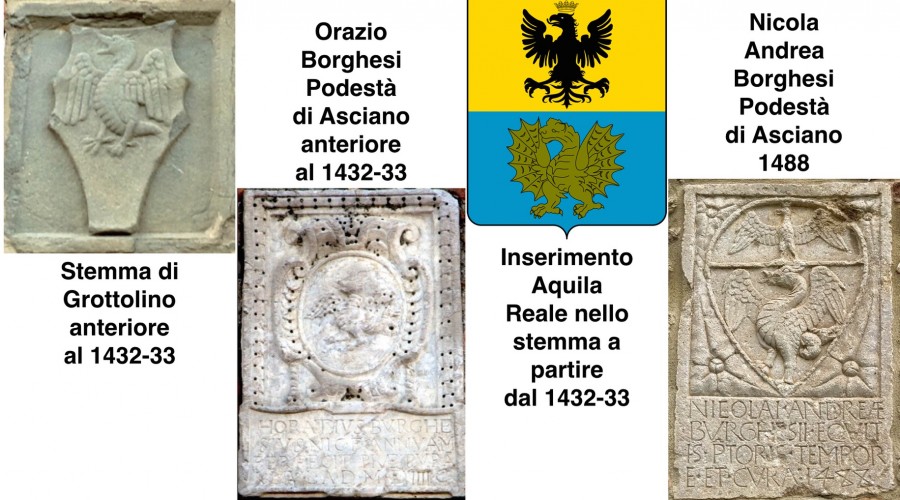Crete Senesi
Asciano and the powerful Sienese Families
ASCIANO - Historical traces of their presence scattered throughout the territory
The intertwining between the history of Asciano and that of Siena has long been known and confirmed by every recent local historical investigation.
Economic and administrative interests that the most powerful Sienese families have had over time in Asciano are less known; their best known names: Bandinelli, Tolomei, Gallerani, Spannocchi.
Recently, however, in two researches we came across the traces of another family that, even more than the ones mentioned, had decisive roles at local and national level. We speak of the BORGHESI or BORGHESE, surname with which, today, they are universally known.
The progenitor, according to current knowledge, was a thirteenth-century wool merchant: Tiezzo da Monticiano who, having moved to Siena, had two children: Bencivenne and Benincasa. From Bencivenne and his son Borghese, the namesake family originated, from which the Borghesi of Siena, those of Florence and Rome descended.
From the other son of Tiezzo, Benincasa, the homonymous Sienese family seems to have descended, to which the famous Santa Caterina (Benincasa) from Siena belonged.
According to the coats of arms traced on the spot, their presence was: both economic and governmental. in fact we know that there were at least two local Podestàs: Orazio Borghesi, before and Andrea Borghesi, after.
Their Weapons or Coats of Arms, whatever you like, are partly different, as can be seen from their photographic images. The reason for the difference is due to the fact that, in the period between the two Ascianese podestarili offices, their illustrious relative: Agostino Borghesi, received from the Emperor Sigismund of Luxembourg, a prestigious noble title and the consequent right to insert in the family, the Imperial Eagle.
Presumably, the conferment of the title occurred in conjunction with the visit of the Emperor to the Sienese Republic (1432 - 1433). Since then, the imperial eagle was added to the winged dragon that characterized the coat of arms of the Borghesi-e.
This detail, in addition to making us understand the reason for the difference between the existing coats of arms on site, allows us to understand that the ancient tower house of Grottoli, which belonged to the Borghesi family for a period, was enlarged by them on the left side before 1432- 33, having placed a coat of arms in sandstone bearing only the winged dragon.
This apparently banal note helps us to perceive the local power of the family in addition to the podestarili assignments. In fact, what is now the former Grottoli estate, presumably existing as early as the 13th century, played a double important role: as an armed garrison in defense of the spring that was still under it, but also as an important signaling communication node to defend the territory and the village of Asciano.
The ongoing investigations show that the possession of these structures was fairly equally divided between "religious power" and local "institutional government", firmly in the hands of the most powerful Sienese families.
The Borghesi family, increasingly known as Borghese, expanded its interests and presence over Rome and Naples over time.
In 1605, Camillo Borghese became Pope Paul V, who managed the fate of the Catholic church until January 28, 1621.
Marcantonio Borghese belongs to the Neapolitan branch who, in 1721, by the will of the Emperor Charles VI, became Viceroy of Naples.
In short, today we would say that the Borghesi-e were "a very successful family". In fact, several members of this family have played important roles over the centuries and it has not yet become extinct. In fact, they survive with four distinct branches.
Anyone wishing to deepen the history of the Borghesi-e, only has to do some research on the internet, finding plenty of material. Here are two sources:
Italian Encyclopedia Treccani
http://www.treccani.it/enciclopedia/borghese_%28Enciclopedia-Italiana%29/
Wikipedia
https://it.wikipedia.org/wiki/Borghese_(famiglia)